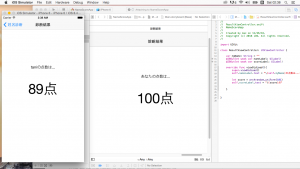simple nextDay procedure, that assuming every month has 30 days.
For example:
### nextDay(1999, 12, 30) => (2000, 1, 1)
### nextDay(2013, 1, 30) => (2013, 2, 1)
### nextDay(2012, 12, 30) => (2013, 1, 1) (even though December really has 31 days)
def nextDay(year, month, day):
"""warning: this version incorrectly assumues all months have 30days!"""
if month == 12 and day == 30:
return year + 1, 1, 1
elif month < 12:
return year, month + 1, 1
else:
return year, month, day + 1
day between date
def nextDay(year, month, day):
if day < 30:
return year, month, day + 1
else:
if month == 12:
return year + 1, 1, 1
else:
return year, month + 1, 1
def deteIsBefore(year1, month1, day1, year2, month2, day2):
if year1 < year2:
return True
if year1 == year2:
if month1 < month2:
return True
if month1 == month2:
return day1 < day2
return False
def daysBetweenDates(year1, month1, day1, year2, month2, day2): days = 0
while dateIsBefoer(year1, month1, day1,year2, month2, day2):
year1, month1, day1 = nextDayMonth(year1, month1, day1)
days += 1
return days
how_many_days, representing a month, and returns the number of days in that month.
days_in_month = [31,28,31,30,31,30,31,31,30,31,30,31]
def how_many_days(month_number):
return days_in_month[month_number - 1]
capital of Indiaby accessing the list
countries = [['China','Beijing',1350],
['India','Delhi',1210],
['Romania','Bucharest',21],
['United States','Washington',307]]
print(countries[1][1])
replace spy code name with list
spy = [0,0,7]
def replace_spy(p):
p[2] = p[2] + 1
replace_spy(spy)
print(spy)
List operation
p = [1, 2]
q = [3, 4]
p.append(q)
q[1] = 5
print(p)
2GB memory that means "2 ** 30 * 2 * 8(bit)", 1 bit have a light switch , so kind of this shows 17 billion light switch
print 2 ** 10
print 2 ** 20
print 2 ** 30
print 2 ** 40
Memory Hierarchy
Look at the latency-distance, speed of light is about 300,000km, CPU Register is 0.12m, and DRAM is 3.6m, harddrive is 2.98km.
So, if you writing a program, you have to think about the latency-distance of each memory that, harddrive is much much far than register and DRAM.
sum list
def sum_list(p):
result = 0
for e in p:
result = result + e
return result
print(sum_list([1, 4, 7]))
define first character U by for loop
def measure_udacity(p):
count = 0
for e in p:
if p[0] == 'U':
count = count + 1
return count
find element in the list procedure
def find_element(p, t)
i = 0
for i < len(p):
if p[i] == t:
return i
i = i + 1
return -1
find_element, using index that takes as its inputs a list and a value of any type, and returns the index of the first element in the input list that matches the value.
def find_elment(p, t):
if t in p:
return p.index(t)
else:
return -1
union that takes as inputs two lists. It should modify the first input list to be the set union of the two lists, assume the first list is a set, that is, it contains no repeated elements.
def union(p, q):
for e in q:
if e not in p:
p.append(e)


